
Heat fusion is a process used to join thermoplastics, such as PP-R, together. Similar to welding, heat fusion physically turns the two pieces of plastic into one piece. In the case of Aquatherm’s specially formulated Fusiolen PP-R, heat fusion does not weaken the material at the point of connection. The heat-fusion connections have the same strength as the pipe wall, so the connections are as strong as the pipe itself.
Heat fusion returns the connection point to a melted state, the same state it was during production. This creates a permanent bond: The polypropylene chains join together as the connection cools, preventing any sort of chemical or physical weakness at the joint. This results in a much lower instance of leaks or failures.
“When we arrived at Ferguson, they had machines set up for us, and we got to learn about the product and put fittings together and see the product fused,” Lentz said. “After our day of training, the Aquatherm representative gave us a test to take to make sure we knew the ins and outs of the process. Then we received Aquatherm certification.”
Smith and Lentz were trained by Trautman and Hollis, and they now both carry the Aquatherm Factory Authorization Card for Installers. The Aquatherm Installer Training Program is designed to help plumbers, contractors and installers become proficient in heat-fusion techniques, as heat fusion offers many advantages, such as speed and consistency, when installing a pipe system. Training is done in a classroom setting with practical hands-on experience, preparing installers for the work they will need to do in the field.
Once the training was completed, Smith and Lentz were able to begin the install as soon as the product arrived on site, which didn’t take long because Ferguson is the sole source of Aquatherm pipe in Tennessee. Also from Ferguson, Smith and Lentz rented a bench machine and McElroy Spider 125, designed for quick and accurate socket-fusion field installations of 2- to 4-in. PP-R pipe and fittings.
“We have an inventory at the Nashville store as well as two trainers plus rental machines and whatever expertise is required for each job,” Hollis said. “[Lentz] knew he could install Aquatherm with the use of the Spider.”
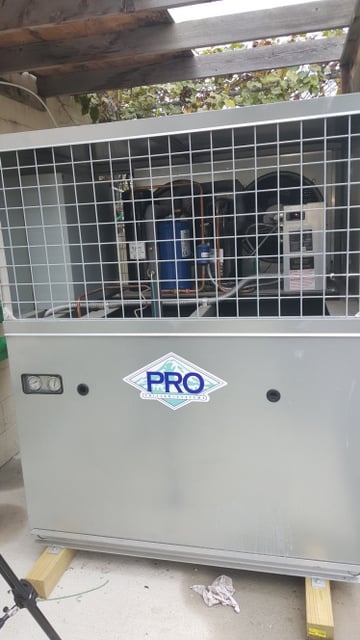
Nontoxic, hydrophobic piping systems can stand up to harsh extremes
Aquatherm’s benefits include labor savings; a 10-year, multimillion-dollar warranty; and environmental friendliness: No toxins or VOCs are associated with installing the PP-R piping systems. Aquatherm requires much less energy to produce than metal piping systems, and they are completely recyclable when no longer needed. Additionally, Aquatherm is less likely than other types of systems to be stolen from a jobsite.
Further, Aquatherm piping systems are made from PP-R, one of the longest lasting and most chemically inert piping materials available. Hydrophobic, Aquatherm PP-R does not react with water. It won’t corrode, scale, or pit like metal pipes, and it can withstand extreme temperatures up to 180° F at 100 psi.
To construct the glycol-cooling piping system, Smith and Lentz chose 2-in. Aquatherm Blue Pipe for all of the headers — the actual loop that runs to and from a PRO Refrigeration glycol chiller with a 100-galllon reservoir, which is common in breweries — amounting to 350 feet of Aquatherm pipe.
The self-contained glycol chiller continuously circulates 160 gallon of glycol through a closed loop. The chiller has two pumps: one pump manages the temperature by circulating the glycol through the chiller to maintain a setpoint of 29° F; the second pump constantly circulates glycol through the closed-loop system, which delivers cold glycol to any of the brewery’s eight vessels, such as the fermentation tanks and packaging tanks, as needed.
Electronic temperature sensors on the brewery’s eight vessels control a solenoid valve on the glycol supply piping system. When the sensors notify the associated computer system that a tank needs cooling, the solenoid valve opens, allowing the cold glycol to flow through the warmed tank, chilling the brewery products inside. Once the vessel reaches the correct temperature, the solenoid valve closes, and the glycol is cut off from the vessel. Each of the vessels is in a various stage of fermentation or conditioning; because there are many different stages, the demand for cooling is constant, so the chiller continually works to maintain the 29°F glycol set point.
To ensure the glycol routes correctly, the supply piping system operates with about 16 pounds of pressure, while the return piping system uses close to 0 pounds of pressure. When a vessel requires cooling, the glycol takes the path of least resistance: It flows down from the supply piping system around the vessel, then back up through the no-pressure return piping system to complete the loop. Even if no vessel calls for cooling, glycol continuously flows through the closed loop, ready to maintain any vessel’s temperature.
“Glycol-chilling systems for craft breweries continue to be a good application,” Trautman said. “[Lentz] told another brewery owner about Aquatherm, and we now have another installation underway.” Yet, Aquatherm has so many uses in a brewing operation: It is approved for potable water and food contact and is great for compressed air, heating and cooling and so many other applications.
“Overall, Ferguson was great to work with, the insulation value of the Aquatherm pipe is great, and we don’t have drips anywhere [resulting from condensation] — when I walk into the brewery every morning, it is bone dry,” Lentz said.
Megan Hernandez, marketing manager for Aquatherm North America, has worked in the PHVAC industry for seven years. Her previous experience includes 13 years as a magazine editor and newspaper journalist; she also is a member of the American Society of Business Press Editors. A graduate of the E.W. Scripps School of Journalism at Ohio University, Hernandez has had a hand in more than 20 press-related honors and awards. Hernandez lives with her husband and son in Cleveland, Ohio. She can be contacted via email at [email protected].

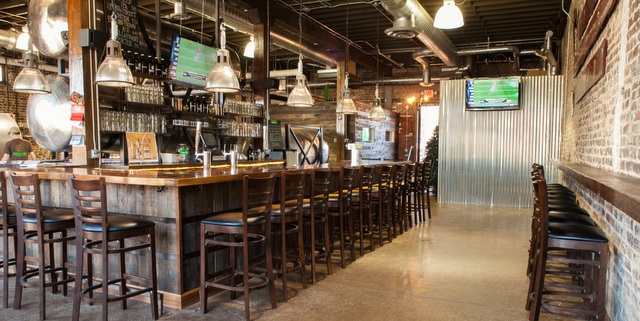
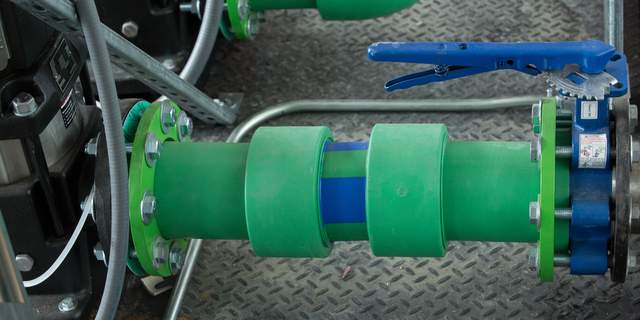
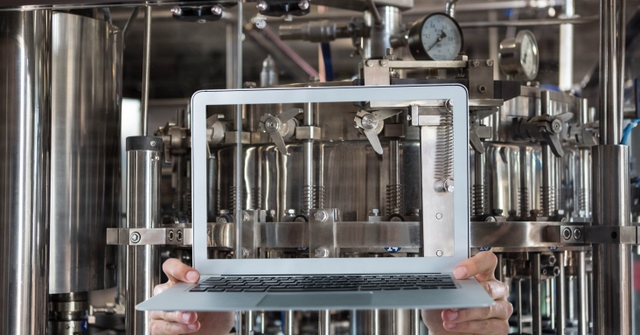
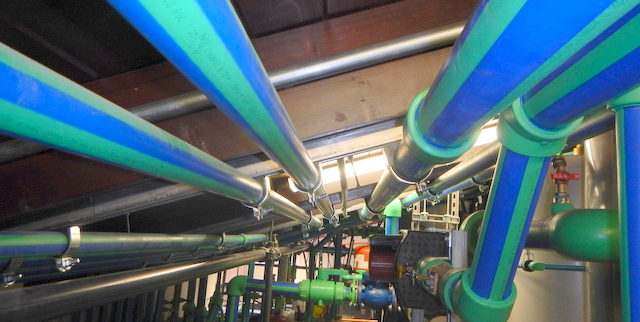
RT @BreweryWastewat: Smith & Lentz Brewing picks Aquatherm piping for glycol-cooling system https://t.co/9rGcw4yT0b via @craftbrewingbiz
Smith & Lentz Brewing picks Aquatherm piping for glycol-cooling system https://t.co/9rGcw4yT0b via @craftbrewingbiz
RT @CraftBrewingBiz: Chiller solution: Nashville brewers pick @Aquatherm piping for glycol-cooling system. https://t.co/ksKS4FNluf https://…
Shmadler Benz and Kurt chillin’…. https://t.co/Esg3vrm0Xy
RT @BountyBev: Check out this article about Nashville’s @SmithandLentz!
https://t.co/bBjPOHxCG4 https://t.co/zlxHmDbc2s
RT @BountyBev: Check out this article about Nashville’s @SmithandLentz!
https://t.co/bBjPOHxCG4 https://t.co/zlxHmDbc2s
Check out this article about Nashville’s @SmithandLentz!
https://t.co/bBjPOHxCG4 https://t.co/zlxHmDbc2s
RT @CraftBrewingBiz: Chiller solution: Nashville brewers pick Aquatherm piping for glycol-cooling. @SmithandLentz https://t.co/ksKS4G4WSP h…
David Snell liked this on Facebook.
Corey Lord liked this on Facebook.
#CraftBeer #CraftBrewing #Beer #BeerBiz Chiller solution: Nashville brewers pick Aquatherm piping for glycol-co… https://t.co/K7F9G7PFjd
Smith & Lentz Brewing picks Aquatherm piping for glycol-cooling system https://t.co/XncYmdXVx5 via @craftbrewingbiz